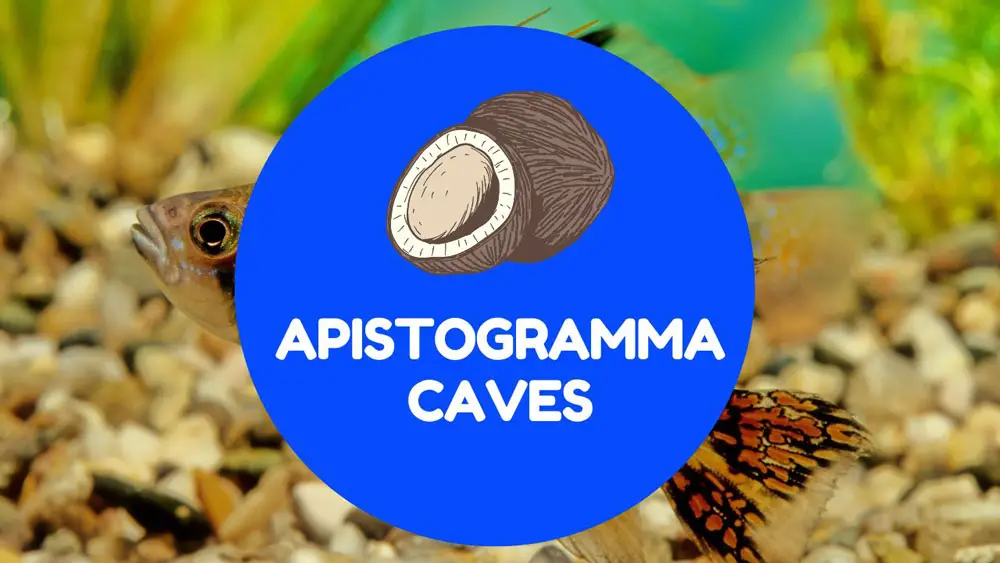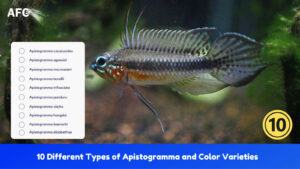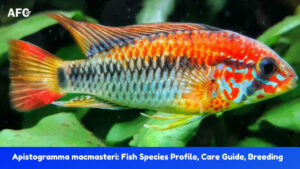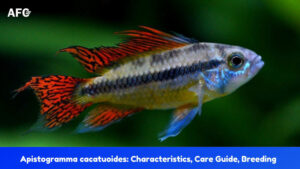A dwarf cichlid, the Apistogramma, is a dazzling array of colorful fish, but it can be somewhat difficult to breed in home aquariums.
One key factor in encouraging their breeding and ensuring their well-being is to provide them with plenty of suitable hiding and spawning places. This is where Apistogramma caves come into play.
In this article, we’ll dive deep into the role of these caves, explore the best types, and even offer some DIY options for you to create your own.
Say goodbye to your worries and hello to a thriving aquatic paradise.
Do Apistogramma Need Caves?
Yes, Apistogramma species need caves for a variety of reasons. Here are some key points explaining why providing caves in your aquarium is essential for these amazing fish:
Encourage Mating and Reproduction
Most Apistogramma are secretive substrate spawners (cave spawners). In the wild, females often deposit their eggs in crevices between layers of fallen leaves or beneath roots.
By providing a secure and enclosed space in your aquarium where they can lay their eggs and protect their fry, you will be encouraging natural spawning behavior.
Serve As Hiding Places
Caves offer a sense of security and safety to Apistos, providing refuge from any potential aggressive tankmates.
It is especially important for strictly polygynous and strictly monogamous species, such as Apistogramma elizabethae and Apistogramma macmasteri, etc., as the males can be quite choosy and aggressive when selecting their mates. Caves can serve as hiding spots for females to dart behind if being chased.
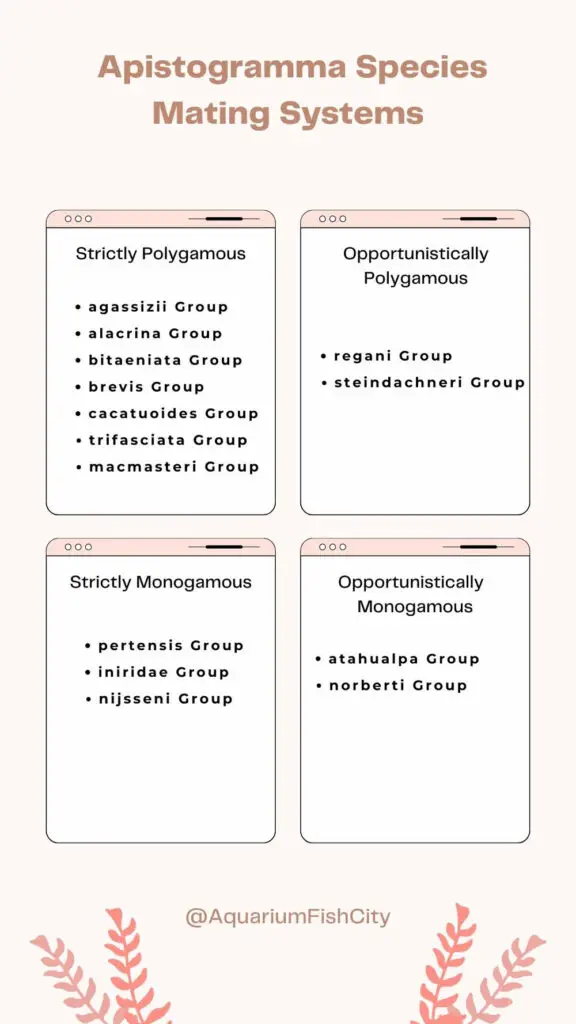
Work As Boundaries in Place
Apistogramma are territorial bottom-dwellers, so providing them with many caves can help to set clear territorial boundaries while promoting peaceful coexistence with other tank mates.
This means fewer battles over territory, less aggression, and a much lower chance of stress-related issues, ensuring your fish are happy, healthy, and thriving.
Exploration
These dwarf cichlids are also naturally curious creatures that enjoy exploring their environment. Caves, alongside other tank decorations such as plants and rocks, enrich their habitat, allowing for a more stimulating and interesting place to live.
How Big a Cave Do Apistos Need?
Whether you opt for commercially available caves or create your own DIY Apistogramma caves, it’s crucial to consider the size of the opening, height, and depth of the cave.
As a general guideline, the size of the aperture should be determined by the size of your female Apistogramma. This ensures that the opening is only big enough for the female to comfortably enter, making it too small for the male or other predatory fish.
But you may be wondering, how does the male fertilize the eggs if he can’t get into the caves? Fear not – the answer is simple. The male will release his milt outside the cave and fan it into the cave by beating his tail fin.
A cave that measures 3 inches (7.6 cm) wide and 1.5 inches (3.8 cm) tall with a 1-inch hole in diameter should be suitable for most Apistogramma species. This size provides enough space for the fish to enter and lay eggs while also offering a sense of security.
What Are The Best Spawning Caves (or Media) for Apistogramma?
In the aquarium, the Apistogramma caves can be made out of a variety of materials, from plastic to ceramic tubes.
Flowerpots as Apisto Caves
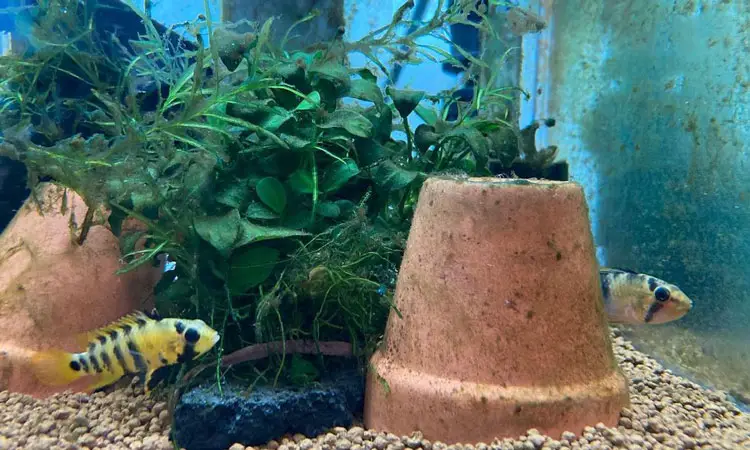
Flowerpots are widely used as spawning caves for Apistogramma due to their availability and versatility. When using flowerpots as fish caves, avoid those glazed or painted both inside and out, as the chemicals used in the glazing or painting process can harm fish.
Pros:
- Inexpensive and easy to find
- Come in various sizes
- Can be easily moved or rearranged
- Terracotta material is safe and neutral for your fish
Cons:
- May require additional customizations like cutting a hole for the entrance
- Can be less visually appealing compared to natural options
- Larger pots can be broken up.
Coconut Shell as Apisto Cave
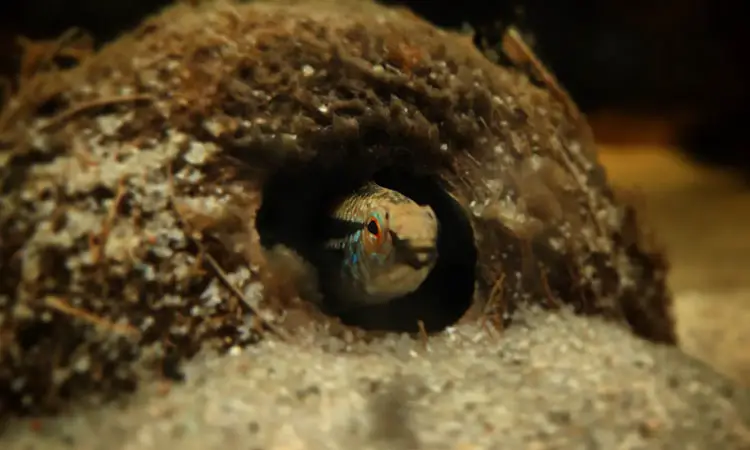
Coconut shells are another popular choice. Their curved shape, natural texture, and the presence of tannins make them great hideouts and spawning media for Apistos.
Pros:
- Natural appearance enhances the aesthetic of your aquarium
- Easy to create an entrance hole of the desired size
- Biodegradable and eco-friendly
- Can be combined with plants to create a more natural look
Cons:
- May need to be replaced over time as they break down
- Availability may be limited depending on your location
- Proper cleaning and preparation are essential to avoid introducing unwanted substances into your tank
Driftwood as Apisto Cave
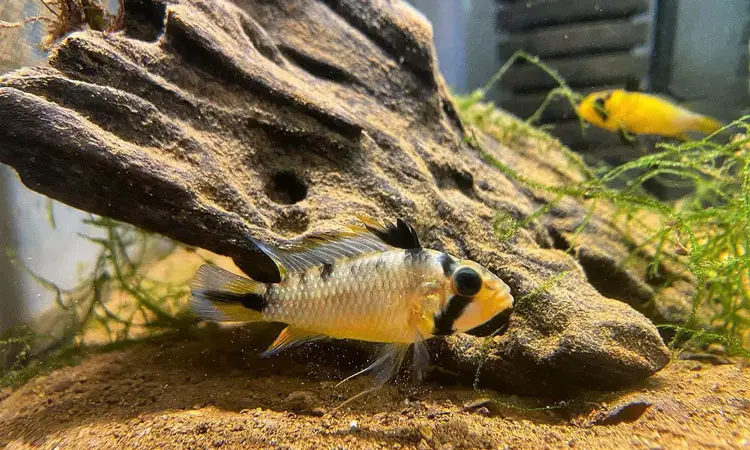
Although not a typical cave, driftwood can be used to create safe hiding spots and crevices for your fish to lay and protect their eggs. Their all-natural appearance won’t be distracting in your tank and helps to mimic the natural habitats where fish live, ensuring your fish feel right at home.
Pros:
- A natural addition to your aquarium
- Unique shapes and sizes create visual interest
- Can be combined with plants for a more natural look
Cons:
- Requires proper preparation (boiling, soaking) to ensure it doesn’t affect water parameters
- May not provide as much protection for the eggs as other options
- Can be more challenging to find the ideal piece
DIY Flowerpots Apistogramma Caves
Here’s a step-by-step guide to making your own Apistogramma caves using flowerpots.
Step 1: Gather Materials
First, you’ll need the following materials:
- Terracotta flower pots (2.5 inches /3 inches)
- A rat tail file
- A masonry drill
- Aquarium-safe silicone
- Fine gravel or sand to match your tank
Step 3: Add Substrate
Add some fine gravel or sand to the bottom of the tank.
Females have a preference for rim-style openings in their caves so they can pile sand in the doorway, creating a sense of security and privacy for themselves and their fry.
In fact, some Apistogramma species will even go as far as blocking the door and not coming out at all until the fry are free swimming. Such digging requires sand.
Step 3: Prepare and Place the Flowerpot
Make sure your flowerpot is clean, free of dirt or chemicals. Peel off any stickers and adhesive by using a piece of sandpaper.
If you plan to half-bury it horizontally in the gravel, use a rat-tail file to enlarge the drain hole. Scuff the edge with sandpaper. Place a piece of slate in the front opening to create a rock facade for an added touch of aesthetic appeal.
When putting the little pots in the tank upside down, use a masonry drill to break an entrance hole on the side. Scuff the edge with sandpaper. The opening should not be too far away from the surfaces of the substrate so the female can easily pile sand in the doorway.
No matter how you place the pot, horizontally or vertically, leave the inside of the pot free of sand.
Author note: cover the pot with java moss to make it look even more natural and inviting!
DIY Coconut Shell Apistogramma Caves
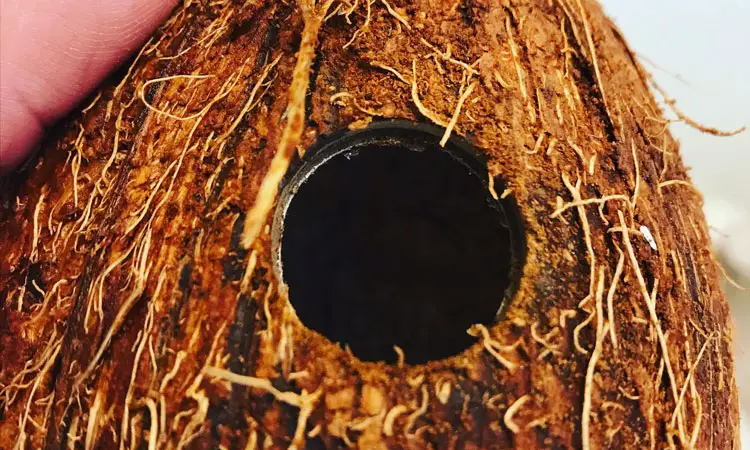
Creating your own DIY coconut shell caves for Apistogramma breeding is both fun and cost-effective. Follow this simple step-by-step guide to make a cozy, natural-looking cave for your Apistogramma.
Step 1: Obtain a Coconut
First, get a coconut to use as the base for your cave. Choose a coconut with a hard shell and no cracks or damage.
Step 2: Cut the Coconut
Be careful, it can be messy! Saw the coconut in half using a hacksaw. If you don’t have a hacksaw, you can use a drill to create holes in both ends to drain the juice and then use a screwdriver to get the meat out.
Step 3: Create an Entrance
Cut a notch or a “V” shape out of the rim with the hacksaw to create an entrance for the Apistogramma. Alternatively, you can drill a hole and shape it with a rounded file to achieve the desired opening size.
Step 4: Clean the Coconut
Thoroughly clean the inside of the coconut half, removing any remaining pulp or fibers. Rinse the shell with water to ensure it is free of debris.
Step 5: Optional Substrate Coating
If you prefer, you can cover the outside of the coconut shell with silicone and then roll it into your tank’s substrate material. This will give the coconut shell cave a more natural appearance, blending it seamlessly with the environment.
Step 6: Place the Coconut Shell in the Tank
Gently press the coconut shell into your tank’s substrate, adjusting the depth to create the desired entrance hole size. Make sure the entrance is easily accessible for your females so they can wall the hole up with sand.
Alternative Apistogramma Caves
If DIY coconut shells and flowerpots don’t suit your fancy, there are plenty of alternative options you can choose from.
Appealing PVC Cave
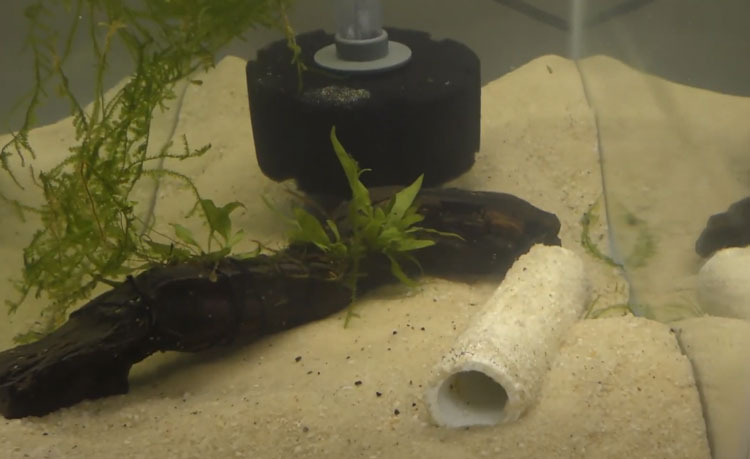
One effective and affordable option for an Apistogramma cave is using a PVC pipe. You can find PVC pipes at any hardware store, which come in various sizes. Choose one with a suitable diameter for your fish, and cut it to a length that fits comfortably in your tank.
Commercial Apistogramma Cave
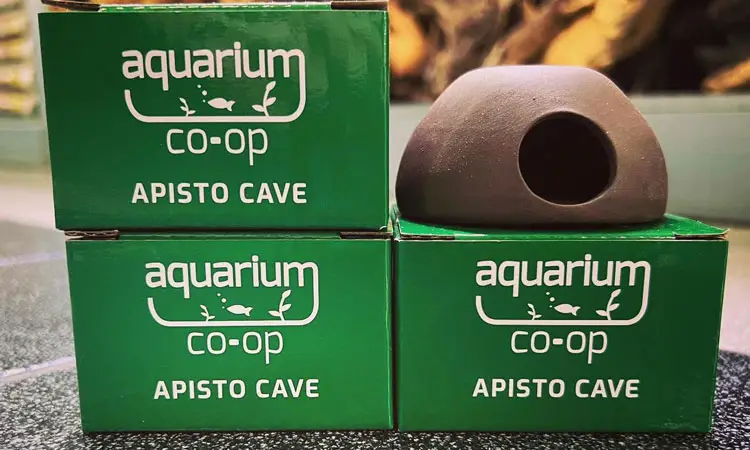
There are artificial Apistogramma caves designed specifically for dwarf cichlids and other small fish. The Aquarium Co-Op Apisto Cave is a small terracotta cave with a hole on one side made from natural terracotta clay and is safe for all aquatic animals.
Rock Cave
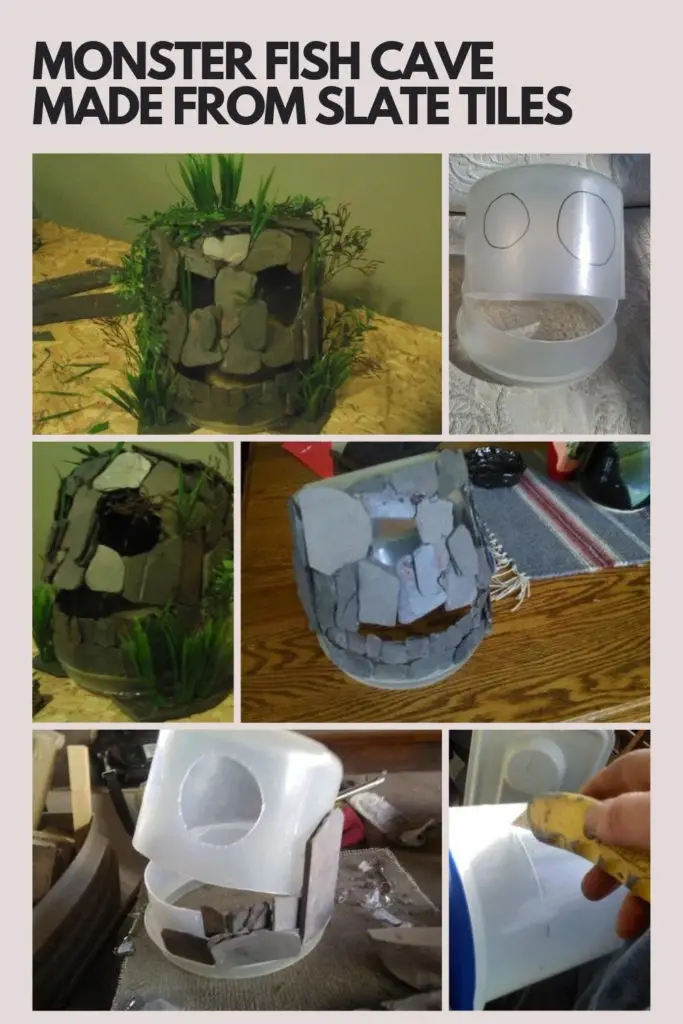
Creating your own rock cave for your Apistogramma is another viable option. Start by selecting flat, aquarium-safe rocks or slate that will serve as the base and roof of the cave. To build the cave, arrange the rocks in a way that leaves an opening for your fish to enter and exit.
Conclusion
By selecting the best spawning media for your Apistogramma, you are providing them with the necessary environment to breed successfully.
Consider your tank’s size, layout, and desired aesthetic when choosing between flowerpots, coconut shells, and driftwood.
If your Apistogramma fish could speak, they would be sure to thank you for providing the perfect hiding spot for them!
